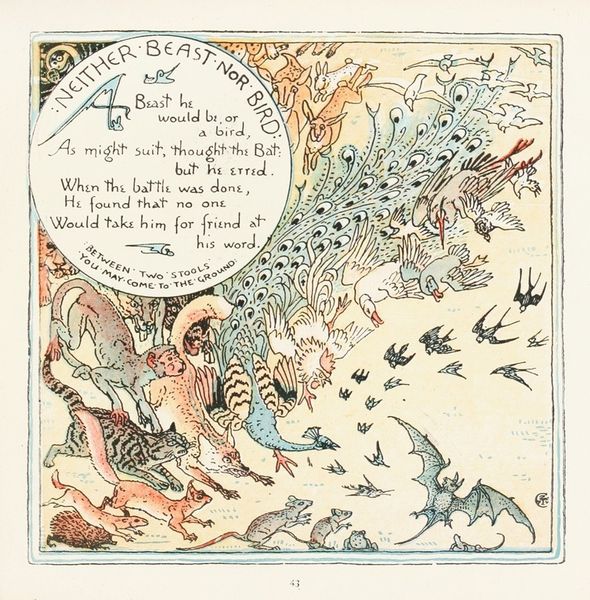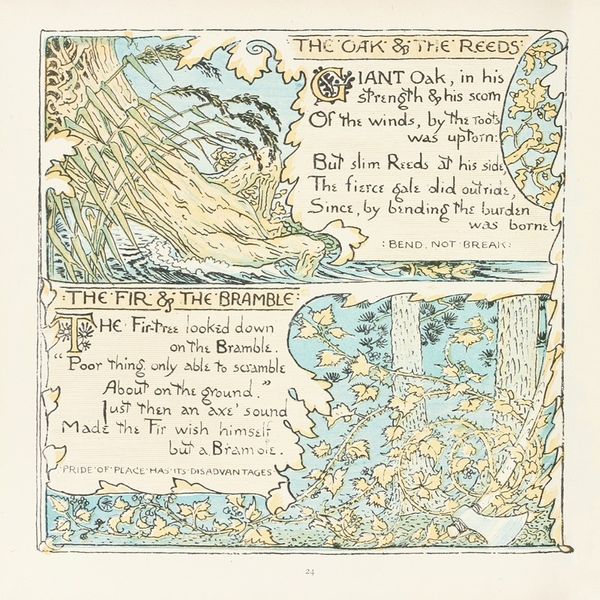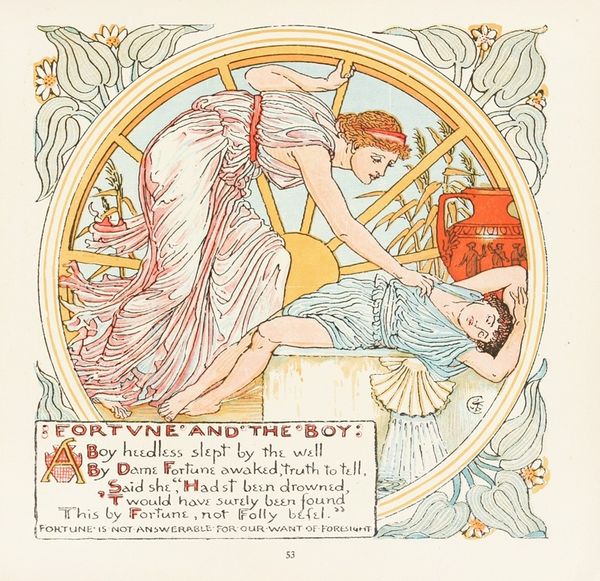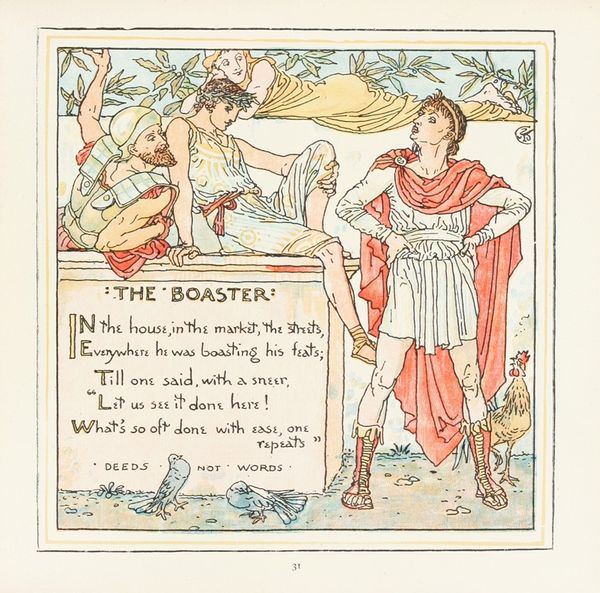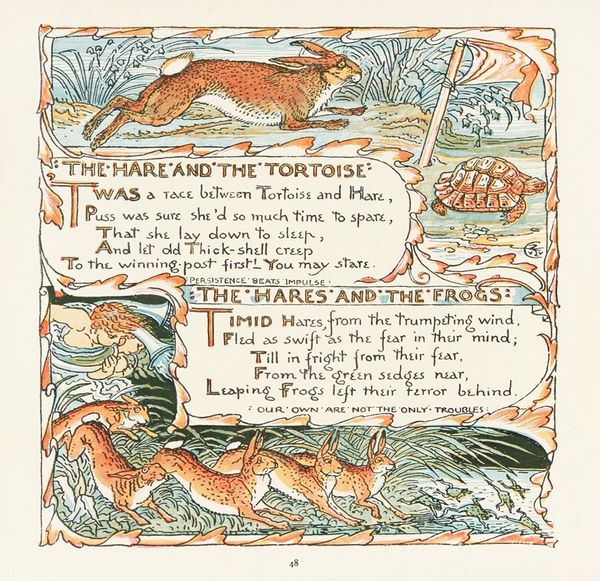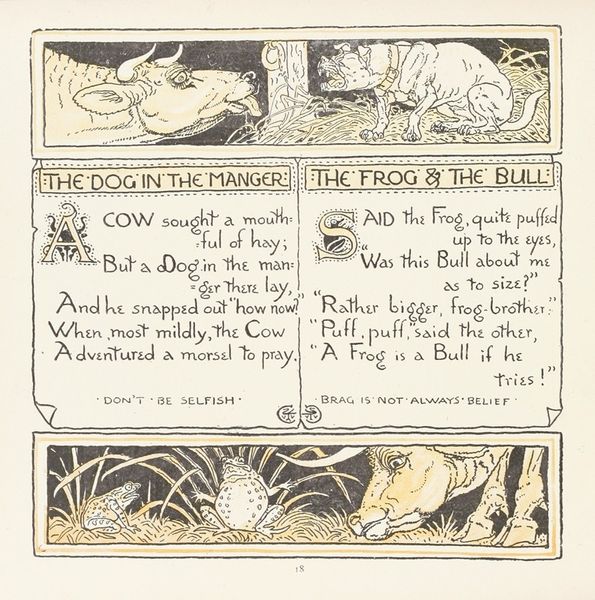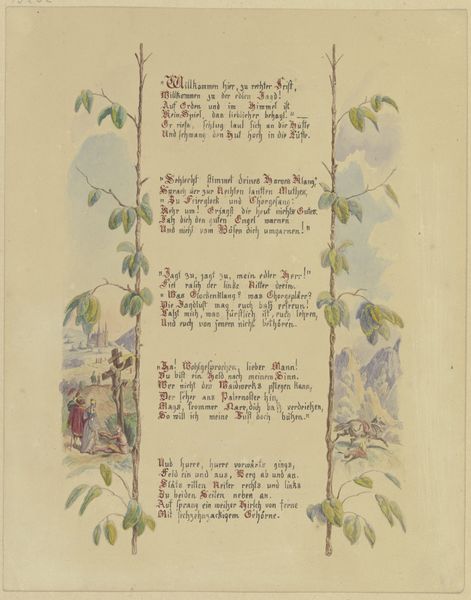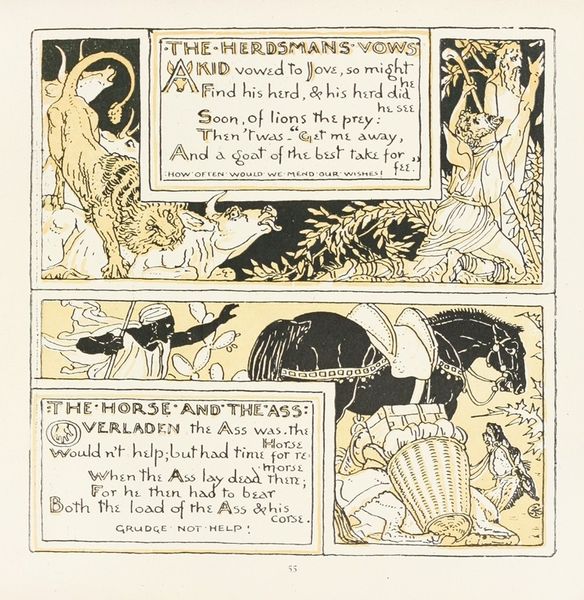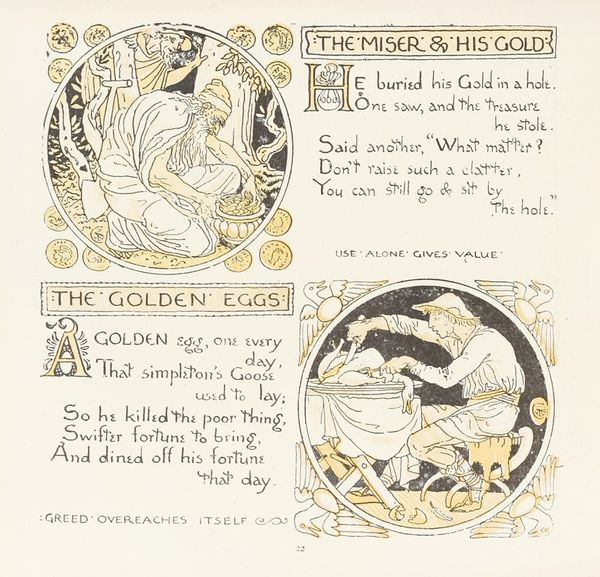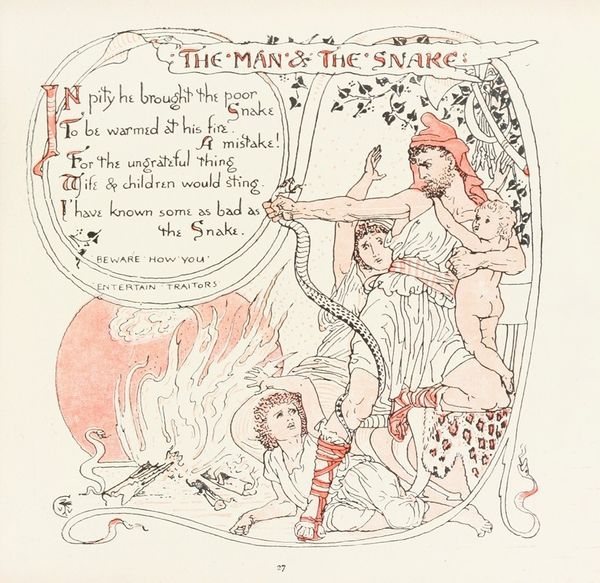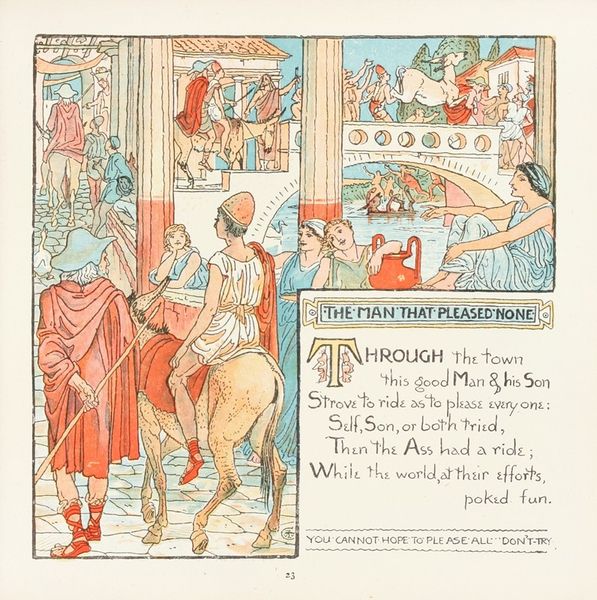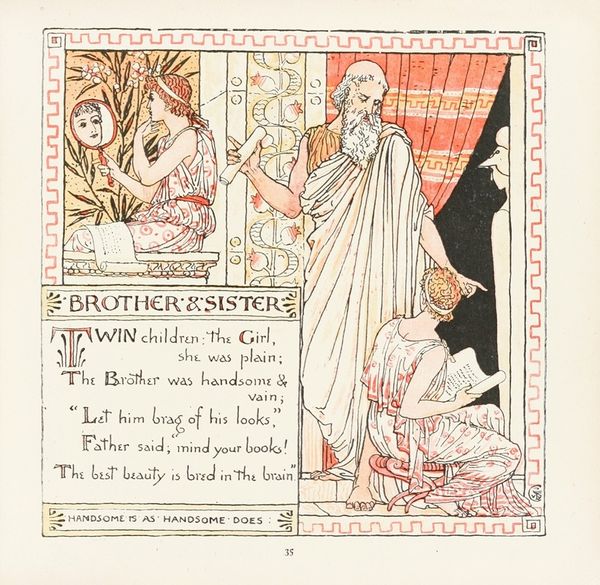
drawing, ink
#
drawing
#
narrative-art
#
pen illustration
#
ink
#
geometric
#
symbolism
#
genre-painting
Copyright: Public Domain: Artvee
Editor: Here we have Walter Crane's "The Wind and the Sun," created in 1908 using ink and drawing techniques. It's got this beautifully decorative border and depicts figures embodying the wind and sun from the well-known fable. It strikes me as a rather deliberate, almost crafted piece. What stands out to you? Curator: I'm immediately drawn to the production of this piece. Consider the labor involved in the intricate linework, the application of ink and watercolor. It wasn't simply about representing a fable, but about demonstrating skilled craftsmanship. Editor: So you see the craft itself as being significant to understanding the artwork? Curator: Absolutely. Crane was deeply engaged with the Arts and Crafts movement, a response to industrialization's degradation of craft. This piece isn’t just an illustration; it's a statement about the value of handcrafted production in an increasingly mechanized world. Think about the geometric pattern intertwined with naturalistic motifs – a fusion of control and nature. Do you see how it resists a straightforward representational purpose? Editor: I see that the labor and specific materials reflect the values of the Arts and Crafts movement. I hadn't considered that connection, I was initially focusing on the narrative of the wind and the sun. Curator: Consider, too, the intended audience for this image. Who would have been able to acquire and appreciate such a work? And what social class did this represent? The way Crane merged “high art” illustration with applied art principles allowed a much broader, almost democratizing level of consumerism and access than perhaps his traditional peers had. Editor: That makes me consider the politics around it more. So, instead of seeing a simple fable, we're looking at a commentary on industry and the social importance of craft? Curator: Precisely. And the means of its creation are integral to that reading. Ultimately, “The Wind and The Sun” serves as an object lesson on both Aesop’s wisdom and cultural capital. Editor: This conversation made me think about the work as a physical object made in response to changes in society. Thanks.
Comments
No comments
Be the first to comment and join the conversation on the ultimate creative platform.
